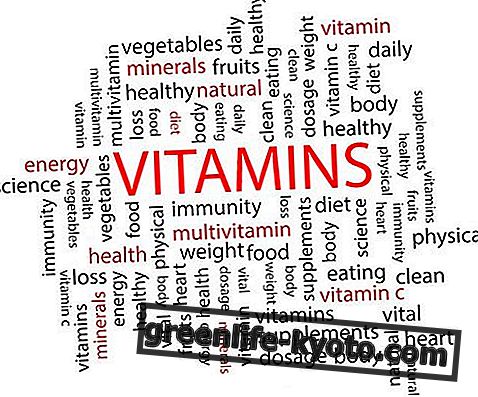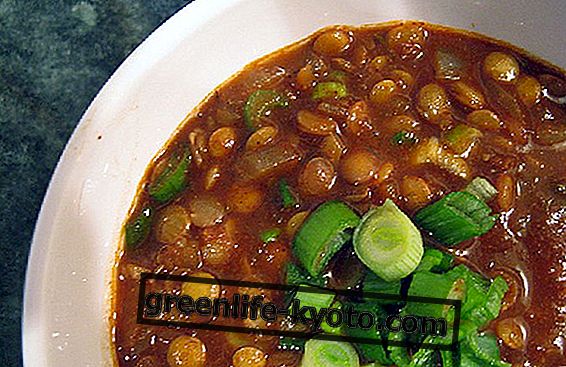Curated by Cinzia Zedda, an Iridology Naturopath
Diabetes is a widespread disease in the West. It has been defined as one of the main evils of our age, therefore linked to an "excess of well-being and abundance". Foods for diabetics are useful for maintaining blood sugar levels and slowing the absorption of sugars . Let's find out what they are.
>
>
The Jerusalem artichoke among the foods for diabetics

What is diabetes
Diabetes is a disease characterized by an increase in the concentration of glucose in the blood. The cause is a "defect" linked to the production of insulin or its altered function. Insulin, on the other hand, is a hormone that has the task of reducing blood sugar levels. It is produced in the pancreas by beta cells (Langerhans islands) and is essential for metabolizing sugars.
It can happen that this mechanism gets jammed because the insulin is not produced in sufficient quantity or because the cells of our body do not respond in the right way with respect to insulin causing a rise in blood sugar. The result of this equation is the appearance of diabetes.
More simply, when there is a defect around the function or production of insulin, glucose does not reach its destination (muscles, adipose tissue) concentrating only in the blood stream thus creating an organic decompensation that also involves the kidneys and urine (glucose it is expelled from the urine giving the characteristic sweetish smell and from here the term "mellitus" in use that derives from "honey", that is sweet as honey.In substance the excess glucose not modulated by insulin, passes through the blood and subsequently it is eliminated from the urine.
Therefore in the diabetes mellitus or type one (insulin-dependent) the pancreas produces little insulin with the consequent increase of glucose in the blood. On a practical level after meals, the blood sugar rises in a physiological manner so that the pancreas produces insulin by activating the mechanisms necessary to decrease glucose in the blood stream so that the cells can use it correctly. In type-two (insulin-independent) diabetes, insulin is produced but the cells do not respond to the request resulting in accumulation of glucose in the blood that is not disposed of.
Why does the pancreas no longer produce insulin ? Inheritance and autoimmunity are the causes of poor insulin production. The risk of developing diabetes in the event of heredity ranges from 5% to 30%. This variability is given by the type of parental relationship with the diabetic (parent and children, brothers and sisters, etc.). Immunity: sometimes the immune system is altered for undefined reasons. This complication causes the system to fail to recognize its own cells that are "attacked" as foreign bodies. Responsible for immune diseases are sometimes some viruses such as measles that can damage cells.
You can learn more about the symptoms, causes and natural remedies for diabetes

Who is at risk of diabetes
People at "risk" are those who have a family member with diabetes and who have unhealthy eating habits or who lead a sedentary and stressful life. Stress is in fact an important contributing factor that determines the onset of many diseases.
Even obesity should not be underestimated. The increase in weight exerts a greater demand for insulin that the organism in deficit of productivity is not able to sustain (hyper insulinism). Diabetes can also appear following chronic pancreatitis or some endocrine diseases . There is no shortage of iatrogenic causes or use of drugs such as cortisone. Gestational diabetes, which is formed during the period of pregnancy generally resolves on its own without the use of particular therapies or dangers that the disease becomes chronic.
Symptoms and consequences of diabetes
The general symptoms are arsura, need to urinate frequently and even at night, excessive hunger, fatigue, visual impairment, weight loss . The consequences can also be serious: progressive loss of sight and the sadly known diabetic foot. For type one diabetes, there is dependence on the exogenous administration of insulin.
Prevent better than cure
A healthy diet against diabetes includes the elimination of foods with high glycemic index such as refined carbohydrates (bread, pasta and baked goods in general), but also of honey and sugar (including cane), too sugary fruit . Even long fasts and binges are not recommended at all.
Those who are overweight should be willing to plan a weight recovery plan and start a controlled training cycle that is appropriate to their needs. Physical activity plays a very important role in the prevention of many diseases. Prevention can also be done through regular blood glucose control (which can also be done in pharmacies).
Foods for diabetics
- The fiber: the contribution of fiber in the diabetic's diet and also in a prevention regime is presented as essential for the maintenance of glycemic values. The fiber slows the absorption of sugars, prolongs the sense of satiety and cleans the intestine. It is therefore a good idea to combine whole carbohydrates with a significant portion of fiber within the same meal.
- Vegetables: vegetables should never be missing from the diabetic table for the reasons mentioned above. In fact, vegetables are excellent sources of fiber as well as being rich in minerals and vitamins that are valuable for the proper functioning of the body. You should just avoid those vegetables that are more sugary like carrots or beets and potatoes .
- Roots : The Jerusalem artichoke is a tuber rich in fiber very suitable for the control of blood sugar. There are also supplements based on Jerusalem artichokes to be used to sweeten drinks instead of sugar. This tuber can be eaten in different ways. It is delicate and tasty at the same time and is also suitable for preparing excellent vegetable creams, alone or together with other vegetables.
- Chromium picolinate : it is an essential element for the absorption of sugars and is indicated as a valid aid in slimming diets. As already mentioned the overweight and more obesity are two factors that play favorably in the outcome of the match to overcome diabetes. Chromium is found in these foods: brewer's yeast, whole grains, asparagus, sprouts, broccoli.
- Legumes : they have a low glycemic index, the legumes are very suitable for controlling the glycemic trend.
- Whole grains: can be included in the diabetic's diet, taking care to adapt the portions well in a balanced regime of proteins, fibers and carbohydrates.













